Kingdom Animalia Class Insecta Family Psyllidae Scientific name Cacopsylla pyri | Phylum Arthropoda Order Hemiptera Genus Psylla Rank Species | |
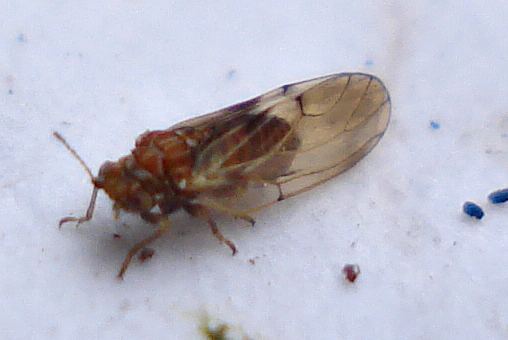 | ||
Similar Cacopsylla, Psylla, Psylloidea, Jumping plant louse, Anthocoris | ||
Psylla pyri is one of the most important pear phytophagics; because of the numerous chemical interventions, its dangerousness is increased, reducing the phytopathogenics's populations of this bug. It is not, however, considered a harmful bug since it is easily censurable with simple interventions, which have favored a resumption of the Psylla's natural enemies.
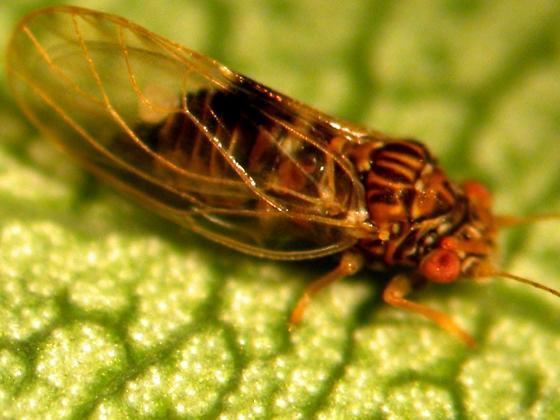
Psylla's adults are long, around 2.5-3 mm, and of ochre or brownish color; the wings are transparent and positioned to sloping roof on the body.
The larvae are flattened and of yellowish-orange color, that darken with time to a brown-blackish color.
In the juvenile stadiums they will cover of honeydew, to protective purpose; the eggs will cover too of honeydew and are of yellow-orange color, besides, are of pointed form to an extremity, while in the other there is a tail.
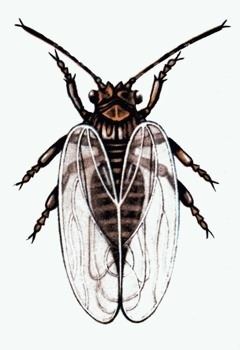
Psylla colonizes the buds, the young leaves, the young branches and, sometimes, the fruits too.
The damages can be direct and indirect: the first ones concern the vegetative arrests and deformations, with small necroses on the buds and on the leaves, following the punctures; the seconds provoke abundant production of honeyedew that provokes asphyxias on the green organs and scorching on the tissues. Besides the honeydew depreciates the fruits and it makes useless the treatments; the honeydew, finally, facilitate the establishment of the mushrooms, that decrease the photosynthetic output, altering the metabolism of the plant.
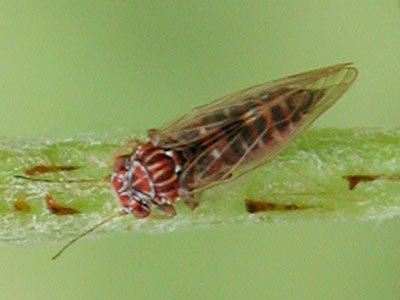
Psylla is a vector of illnesses too, like the Pear's Blackberry. This bug winters as adult and it completes 5 generations a year; activity is taken back in March, with superior temperatures to 10 °C.
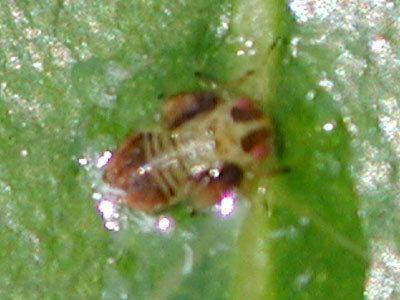
Struggle methods

It performs criteria of guided and integrated struggle; treatments are effected only to the overcoming of the intervention threshold and considering the presence of the Psylla's natural enemies.
The intervention thresholds are:
- treatments, in presence of honeydew or damage, on the fruits up to half June;
- treat, always in presence of honeydew or damage, in relationship among the N° of infesting throws by Psylla and by Anthocorids, that it must be equal to 5:1; if superior, it intervenes it (from half of June in then).
Struggle's techniques foresee:
- in presence of eggs, with eggcide (Diflubenzuron, Teflubenzuron) or White Oils, in spring-summer;
- in presence of larvae, with Abamectina, preceded by washing's treatments with detergents and water, within the end of May.
The struggle foresees the use of biological products, like Bacillus thuringiensis, in substitution to the chemical products.
Among the Psylla's natural enemies, its remember them:
- Anthocorids Hemipterals, genus Anthocoris (nemoralis and nemorum), predators of all Psylla's stadiums; genus Orius, larvae and adults Psylla's predators; Anthocorids complete 2-3 generations a year and winters as adults;
- Dipteral Sirfidis and Cecidomidis;
- Neuropteral Crisopidis, Miridis Hemipterals and Nabidis;
- Prionomitus mitratus, parasitic Himenopterus of the Psylla's preimmaginal stadiums.
